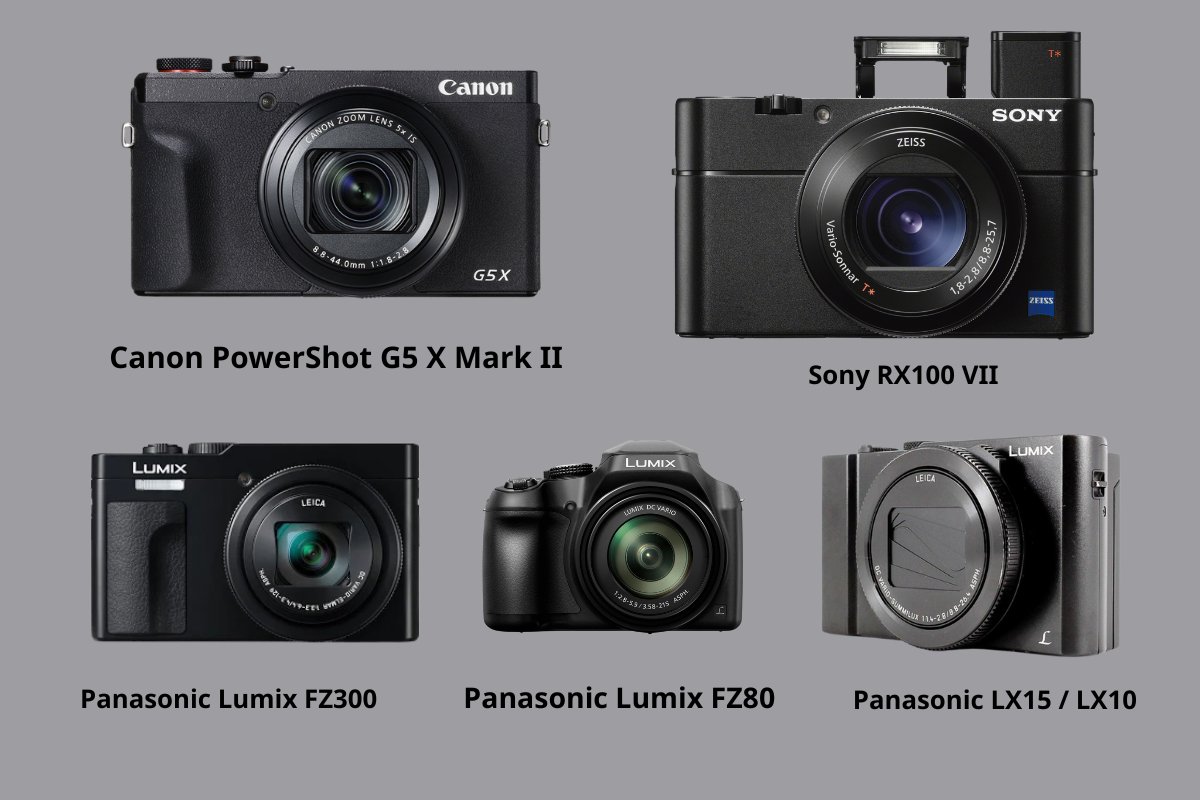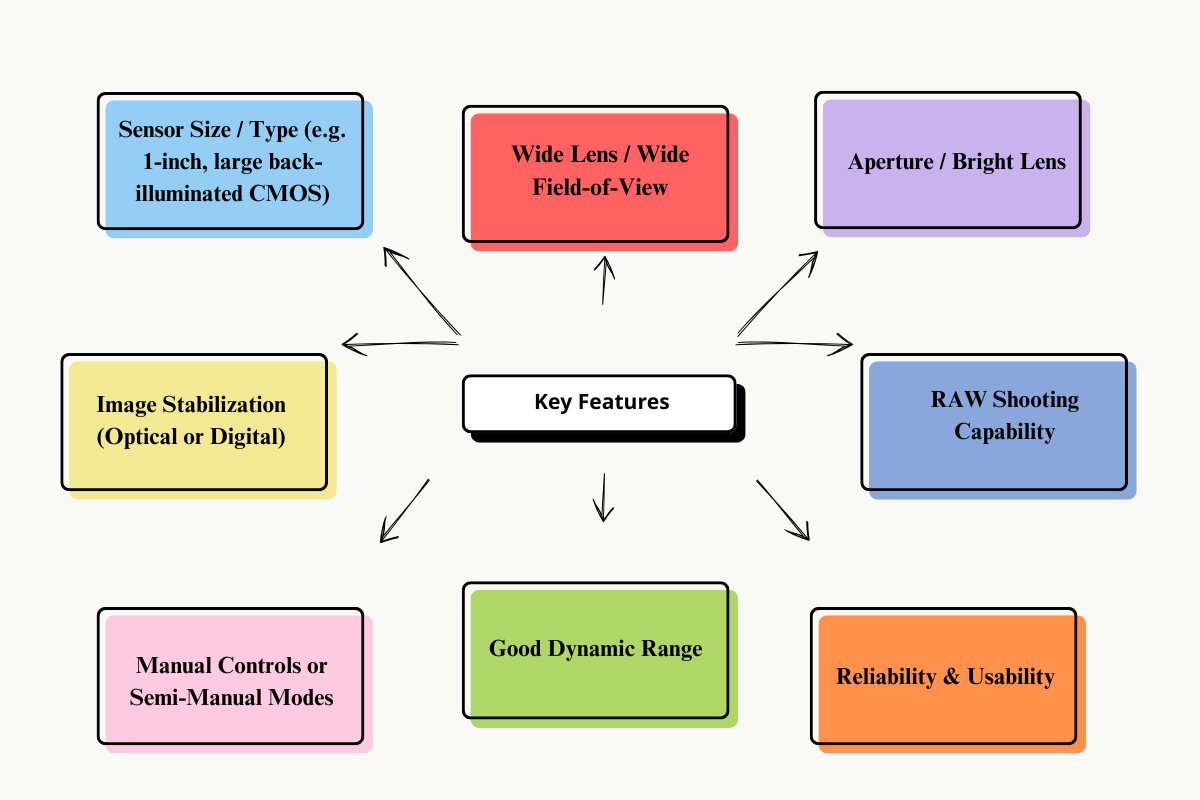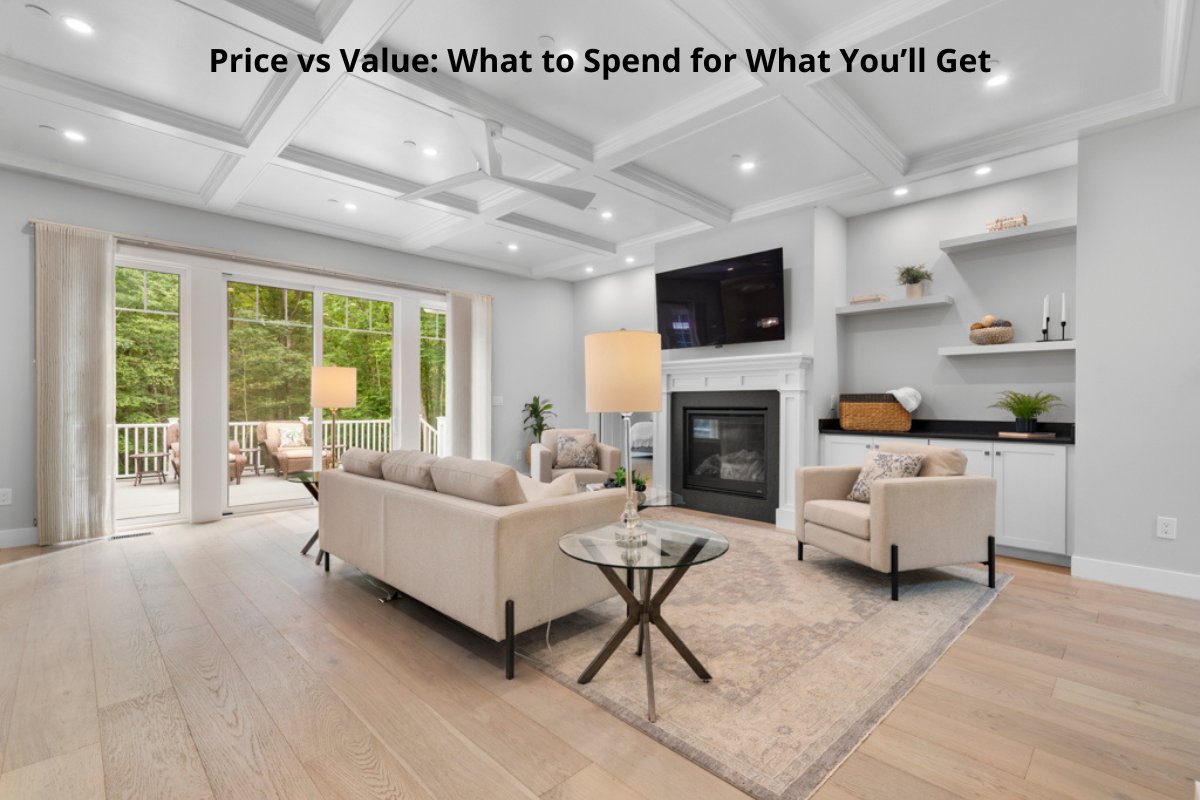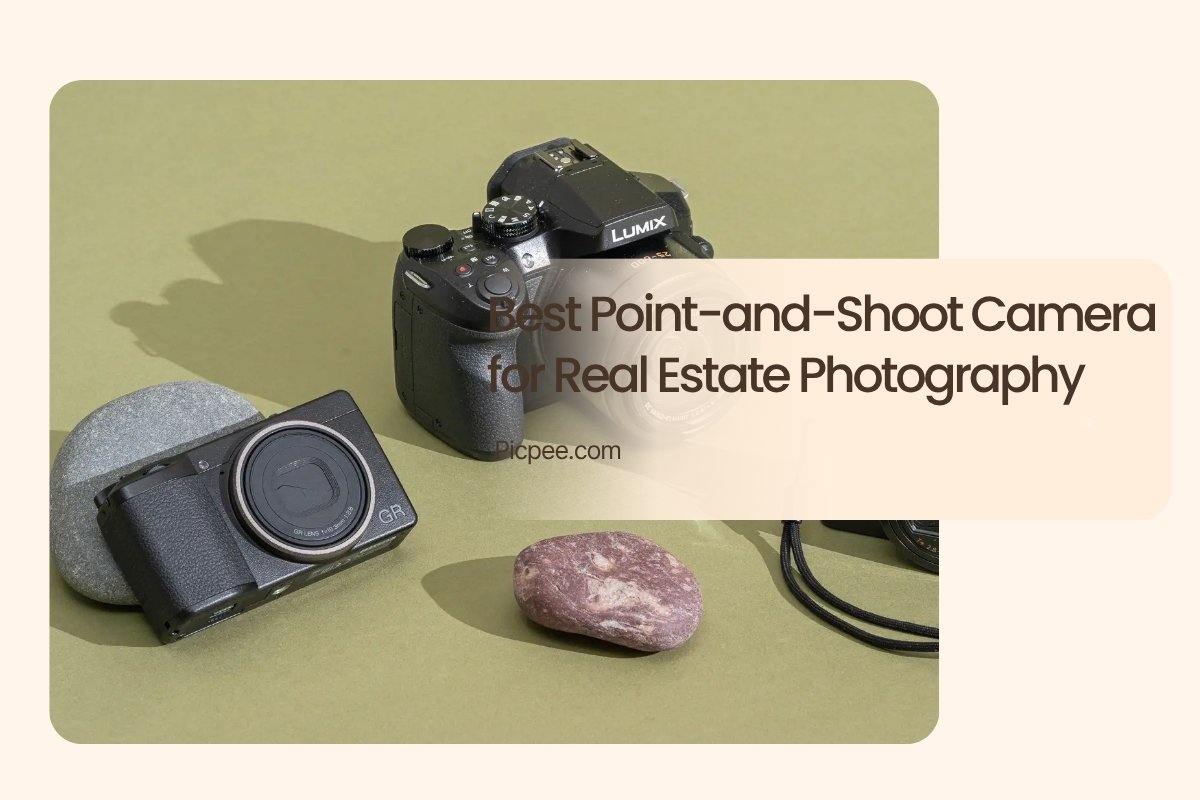For many real estate agents, brokers, and freelance photographers, a point-and-shoot camera offers a powerful mix of portability, simplicity, and image quality. When properly chosen, it lets you capture wide interiors, bright exteriors, and detailed shots without lugging around big DSLRs or mirrorless systems. This guide breaks down what features matter, which mistakes to avoid, and the best point-and-shoot models to consider so your property listings always look professional and inviting.
Top Point-and-Shoot Camera Models for Real Estate

When choosing a compact camera for real estate photography, it’s important to balance image quality, lens versatility, and low-light performance. The following models stand out for their superior optics, user-friendly controls, and ability to capture both interiors and exteriors effectively.
Model Overview
|
Model
|
Key Strengths
|
Considerations
|
|
Sony RX100 VII
|
1-inch sensor, fast autofocus, 24–200mm zoom range, effective stabilization.
|
Slightly expensive; wide end not ideal for small rooms.
|
|
Canon PowerShot G5 X Mark II
|
Great image quality, compact design, intuitive interface, good zoom range.
|
Moderate battery life; soft details at full zoom.
|
|
Panasonic Lumix FZ300
|
Constant aperture lens, strong zoom, weather-sealed body, ideal for detail shots.
|
Smaller sensor can cause noise in low-light interiors.
|
|
Panasonic Lumix FZ80
|
Superzoom capability, wide field of view, affordable price.
|
Optical performance decreases at extreme zoom levels.
|
|
Panasonic LX15 / LX10
|
Bright f/1.4–2.8 lens, compact body, performs well in dim interiors.
|
Limited zoom; fewer external manual controls.
|
Why These Models Work Well for Real Estate
Each of these cameras provides a balance between ease of use and professional-level image output. For agents or photographers who prefer portability without sacrificing clarity, these models deliver:
- Wide focal range suitable for tight indoor spaces.
- High-quality sensors that capture fine textures and details.
- Excellent color reproduction for realistic interiors.
- Stabilized lenses that minimize blur in handheld shots.
- Compact, lightweight bodies that make quick shoots effortless.
Whether you’re shooting a cozy studio apartment or a luxury villa, these point-and-shoot options can provide the sharpness, brightness, and dynamic range needed to make listings stand out.
Why Choose a Point-and-Shoot for Real Estate Photography

A point-and-shoot camera has certain advantages for property photography. Understanding them helps you decide whether this kind of camera fits your needs.
Advantages:
-
Compact and portable: Easy to carry between rooms, floors, and houses; fast to set up.
-
All-in-one lens built in: No lens swapping required, which saves time and avoids dust entering the sensor.
-
Quick operation: Fast autofocus, built-in stabilization (in many models), and image preview help in tight schedules.
-
Decent quality without huge cost: Modern point-and-shoots with large sensors (1-inch, etc.) rival older mirrorless in low light and sharpness.
Limitations:
-
Smaller sensors than full-frame or many mirrorless cameras can reduce performance in very low light.
-
Limited ability to interchange lenses means you’re stuck with the built-in field of view; you must pick one with wide enough coverage.
-
Sometimes fewer manual controls, meaning less flexibility for tricky lighting or HDR.
Key Features to Look for in a Point-and-Shoot for Real Estate

To get the most out of a point-and-shoot in real estate, some features are essential. These help ensure your photos are bright, sharp, distortion-controlled, and aesthetically pleasing.
|
Feature
|
Why It Matters
|
|
Sensor Size / Type (e.g. 1-inch, large back-illuminated CMOS)
|
Larger sensors gather more light, reduce noise, deliver more detail—crucial for dim interiors.
|
|
Wide Lens / Wide Field-of-View
|
Need something wide (≈ equivalent 24-28mm full-frame or wider) to capture full rooms without distortion.
|
|
Aperture / Bright Lens
|
Faster apertures (e.g. f/2–f/4) help manage low light, reduce reliance on flash, produce cleaner images.
|
|
Image Stabilization (Optical or Digital)
|
Helps reduce blur, especially in interior shots with slower shutter speeds.
|
|
RAW Shooting Capability
|
Allows correction of exposure, white balance, shadows/highlights in post-processing.
|
|
Manual Controls or Semi-Manual Modes
|
ISO, shutter speed, exposure compensation—necessary for tricky lighting scenes like windows + interior.
|
|
Good Dynamic Range
|
Ensures windows aren’t blow-outs, and interior shadows still retain detail.
|
|
Reliability & Usability
|
Good lens sharpness, minimal distortion, robust autofocus, decent battery life.
|
Price vs Value: What to Spend for What You’ll Get

Depending on your budget, different point-and-shoots offer different levels of performance. Here’s a breakdown:
|
Budget Tier
|
What You Can Expect
|
Good Use Cases
|
|
Entry ($300-600)
|
Basic wide lens, some stabilization, decent daylight performance.
|
Smaller interior rooms, rentals, basic listings.
|
|
Mid ($600-1,200)
|
1-inch sensor, better lens/speed, good low-light, video options.
|
Quality images for listings, exteriors, twilight shots.
|
|
High ($1,200+)
|
Top 1-inch or premium compact with fast lens, excellent stabilization, excellent dynamic range.
|
High-end real estate, architectural shots, marketing materials.
|
How Picpee Can Help Improve Your Point-and-Shoot Photos
Even with great technique, finished real estate photos often benefit from professional editing. Picpee is a photo editing service tailored to real estate imagery that can enhance results from point-and-shoot cameras.
What Picpee Offers:
- HDR blending of exposures to balance bright windows and interiors.
- Color correction and white balance consistency.
- Distortion correction from wide lenses.
- Clarity, lighting, and contrast adjustments while keeping natural tones.
- Fast turnaround so you can deliver polished images to clients quickly.
Using Picpee allows your photos to look almost as premium as those taken with higher-end gear, maximizing the return on your investment.
Conclusion
A good point-and-shoot camera is more than enough for many real estate photography needs—if you choose one with a large sensor, wide lens, solid stabilization, and sufficient manual controls. With smart shooting techniques and careful editing, you can create property photos that look professional, inviting, and highly effective at attracting buyers.
 Single Exposure
Single Exposure Room Cleaning
Room Cleaning Reels
Reels Blended Brackets (HDR)
Blended Brackets (HDR) Changing Seasons
Changing Seasons Slideshows
Slideshows Flambient
Flambient Water in Pool
Water in Pool Individual
Individual 360° Image Enhancement
360° Image Enhancement Lawn Replacement
Lawn Replacement Team
Team Virtual Staging
Virtual Staging Rain to Shine
Rain to Shine Add Person
Add Person Remodel
Remodel Custom 2D
Custom 2D Remove Person
Remove Person 360° Image
360° Image Custom 3D
Custom 3D Background Replacement
Background Replacement Day to Dusk
Day to Dusk Property Video
Property Video Cut Outs
Cut Outs Day to Twilight
Day to Twilight Walkthrough Video
Walkthrough Video Change color
Change color 1–4 Items
1–4 Items




